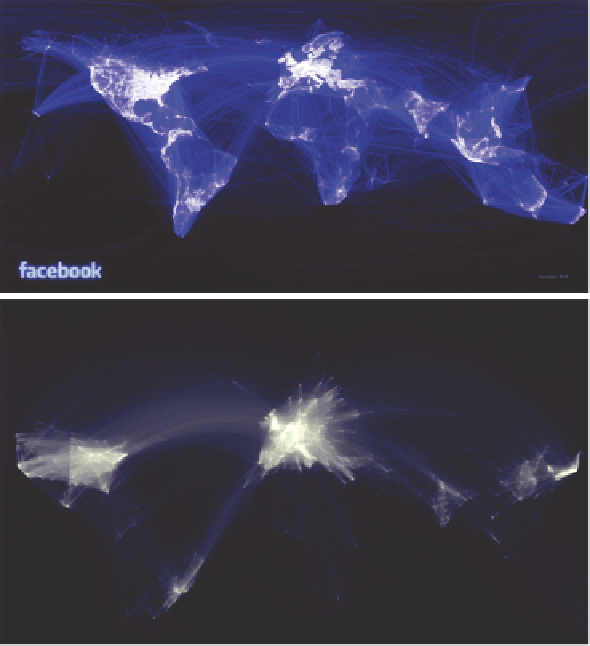Environmental Engineering Reference
In-Depth Information
increasingly large, diverse, and educated public (
Durant and Ibrahim 2011
)byactively
participating in education of citizens and in the communication of their scientific
research (
Box 17.1
). It seems likely that closer engagement with policy-makers and
the public will change the research priorities of ecosystem scientists, as well as the
approaches that we use (e.g., using networks of citizen scientists to help answer—and
ask—research questions).
Historically, science was dominated by relatively few people, primarily from Western
countries; however, this trend has been changing over the past few decades, through
concerted efforts as well as the rapid development of connectivity tools (e.g., the Internet,
see the following). For example, funding competitions often now encourage international
FIGURE 17.4
Conducting science in a globally collaborative network. Inspired by the creation of a Facebook
friendship map (upper map), the lower map illustrates global scientific collaborations. Each arc represents part-
nerships between scientists in different cities collected from studies, books, and trade journals found in Elsevier
from 2005
2009. The Facebook map depicts how networking technology has created new and widespread oppor-
tunities for communication. Similar communication technologies are likely to be used by ecosystem scientists to
expand and diversify worldwide collaborations, and to brighten dark areas of the lower map. Currently, most col-
laboration is centered in the Americas, Europe, and Japan. A zoomable very high-resolution map can be consulted
at
http://collabo.olihb.com/.
(Lower map created by Olivier H. Beauchesne.)



